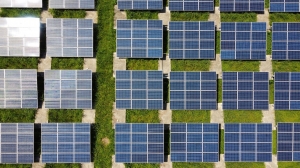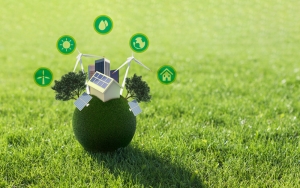As global ecological concerns continue to rise, adopting techniques promoting sustainability becomes imperative. These environmentally friendly practices contribute to a healthier, more sustainable future for future generations. Here are five effective strategies that can make a significant difference.
Method 1. Water Conservation
Water is one of our most precious resources, yet it is often taken for granted. Effective water conservation methods can significantly reduce water wastage and promote sustainable use. Here are a few practices that can help conserve water:
Efficient Irrigation Systems
Utilizing drip irrigation and innovative sprinkler systems can drastically reduce water use in agriculture and landscaping. These systems supply water directly to the plant roots, which reduces evaporation and runoff.
Rainwater Harvesting
Rainwater collection and storage for later use have the potential to dramatically reduce demand for urban water supply. After appropriate treatment, this water can be used for gardening, irrigation, and even household purposes.
Low-Flow Fixtures
Installing low-flow faucets, showerheads, and toilets can reduce water consumption in households and commercial buildings. These fixtures use less water per minute, which can lead to substantial savings over time.
Water-Efficient Appliances
Using water-efficient equipment such as dishwashers and washing machines can help to drastically cut water use. Look for the WaterSense label, which shows that the product meets EPA water efficiency criteria.
Education and Awareness
Raising awareness of the necessity of water conservation and teaching practical water-saving techniques can have long-term benefits. Educational activities in schools and communities may create a conservation culture from an early age.
Method 2. Renewable Energy
The change from fossil fuels to reusable energy sources is critical for addressing climate change and securing a sustainable future. Here are some renewable energy sources that are making a difference:
Solar Power
Harnessing the sun's energy using photovoltaic panels and solar thermal systems is one of the most popular and widely used renewable energy sources. Solar power is scalable, from small residential systems to large solar farms.
Wind Energy
Wind turbines change the kinetic charge of the air into electricity. Onshore and offshore wind farms are rapidly contributing to the global energy mix by providing clean and renewable electricity.
Hydropower
Hydropower is one of the oldest and most established forms of renewable energy. It utilizes the energy of flowing or falling water. Modern small-scale and low-impact hydropower systems offer sustainable options without the significant environmental impacts of large dams.
Biomass Energy
Organic resources, such as agricultural wastes, wood, and even some forms of garbage, can generate energy through burning or other processes. Biomass energy is flexible since it can be used to generate power, heat homes, and fuel vehicles.
Geothermal Energy
Geothermal energy, which taps into the heat from within the Earth, can be used for electricity generation and direct heating applications. Geothermal power plants and ground-source heat pumps provide reliable and sustainable energy.
Method 3. Green Building
Green building techniques focus on reducing the environmental impact of construction and ensuring the sustainability of buildings. Here are the essential elements of green building:
Energy Efficiency
Green buildings prioritize energy efficiency through high-performance insulation, energy-efficient windows, and advanced HVAC systems. For instance, integrating reusable energy sources, such as solar panels and wind turbines, on prefabricated houses further reduces its reliance on non-renewable energy.
Sustainable Materials
Using materials that are sustainably sourced, recycled, or have low environmental impact is crucial in green building. Bamboo, recycled steel, and reclaimed wood are examples of materials that reduce construction projects' carbon footprint.
Water Efficiency
Incorporating water-saving fixtures, rainwater harvesting systems, and greywater recycling into building designs can significantly reduce water usage. Gardening with native plants that require less watering also enhances water efficiency.
Indoor Environmental Quality
Proper ventilation, the use of non-toxic construction materials, and appropriate natural illumination are all necessary for maintaining healthy indoor air quality. It promotes tenants' health and well-being while enhancing energy efficiency by removing the necessity for artificial lighting and climate control.
Site Selection and Design
Choosing a site that minimizes environmental disruption and designing buildings that integrate with the natural landscape are essential considerations. Green roofs, permeable pavements, and urban green spaces can help manage stormwater, reduce heat island effects, and promote biodiversity.
Method 4. Sustainable Agriculture
Sustainable agriculture aims to meet the present's food needs without hindering future generations' capacity to meet their own needs. Here are some practices that promote sustainability in agriculture:
Organic Farming
Avoiding synthetic fertilizers and pesticides, organic farming relies on natural processes and biodiversity to maintain soil health and control pests. This method reduces pollution and enhances soil fertility.
Agroforestry
Integrating trees and shrubs into agricultural landscapes improves biodiversity, soil structure, and water retention. Agroforestry systems, including food, fodder, and timber, can provide multiple benefits.
Crop Rotation and Diversity
Rotating crops and cultivating various plant species can reduce pest outbreaks, improve soil health, and increase resilience to climate change. This practice promotes a balanced ecosystem within agricultural systems.
Precision Agriculture
Utilizing GPS, sensors, and data analytics allows farmers to optimize inputs like water, fertilizers, and pesticides. Precision agriculture can increase yields while reducing environmental impacts.
Sustainable Livestock Management
Techniques such as rotational grazing, improved feed efficiency, and better manure management can reduce the environmental footprint of livestock production. Integrating livestock and crop production can also enhance nutrient cycling and soil health.
Method 5. Waste Reduction and Recycling
Reducing waste and promoting recycling are essential components of a sustainable future. Here are some strategies to minimize waste and encourage recycling:
Source Reduction
Reducing the material used in products and packaging can significantly decrease waste. Design for longevity and repairability also helps extend product life cycles.
Recycling Programs
Implementing comprehensive recycling campaigns for materials such as paper, plastic, glass, and metals can divert significant waste from landfills. Ensuring that recyclable matter is properly sorted and processed is crucial for the success of these programs.
Composting
Composting organic waste, such as food and yard waste, produces nutrient-rich soil amendments. Composting decreases garbage that ends up in landfills while also providing a useful resource for gardening and agriculture.
Upcycling
Transforming waste materials into new, higher-value products is an innovative approach to waste reduction. Upcycling can involve creatively reusing materials into art, furniture, or other functional items.
Extended Producer Responsibility
Holding manufacturers liable for their goods' whole lifespan, including disposal, might encourage the creation of more sustainable and recyclable items. This method encourages businesses to think about the environmental effect of their goods from start to finish.
Takeaways
Adopting these five green methods can significantly contribute to a sustainable future. By conserving water, embracing green building practices, shifting to renewable energy, promoting sustainable agriculture, and reducing waste, we can ensure a healthier planet for ourselves and future generations.






